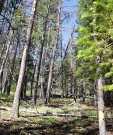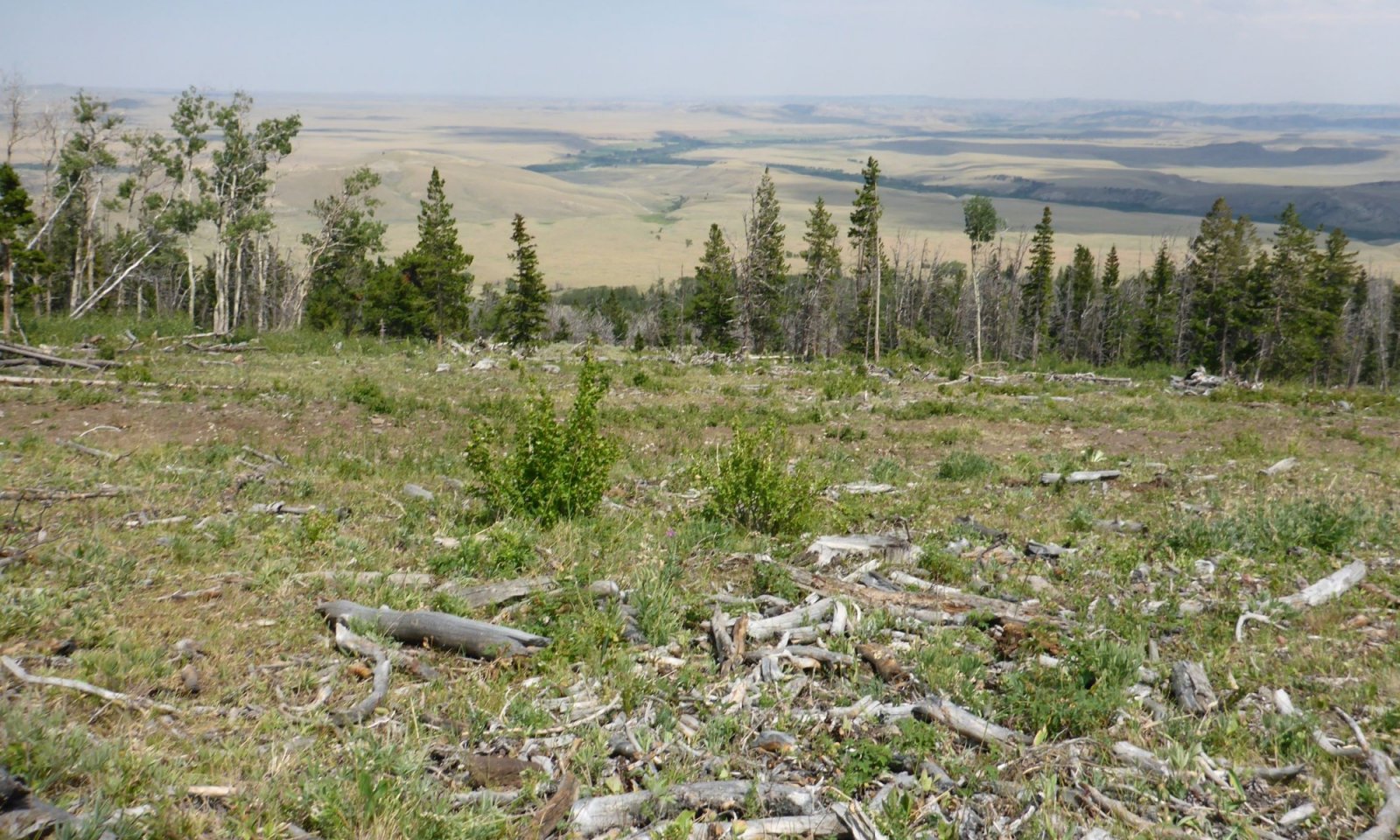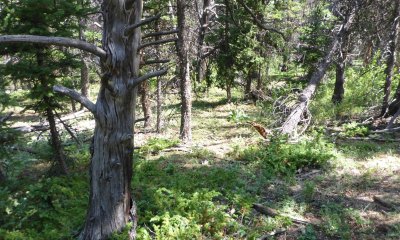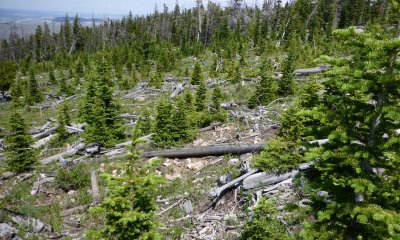
Upland Cool Woodland Group
Scenario model
Current ecosystem state
Select a state
Management practices/drivers
Select a transition or restoration pathway
-
Transition T1A
The recovery of a site following a high intensity fire removing the Douglas-fir over story lends to a lodge pole pine community.
More details -
Transition T1B
Fire followed by erosion removes the soil cover encouraging herbaceous growth that inhibits the establishment of woody vegetation back to these eroded sites.
More details -
Restoration pathway R2A
Given time and with timber management, Douglas-fir will recover and expand on the site. Low intensity fire patterns are needed to maintain and improve this community.
More details -
Transition T2A
Extreme erosion following removes the soil cover encouraging herbaceous growth that inhibits the establishment of woody vegetation back to these eroded sites.
More details -
No transition or restoration pathway between the selected states has been described
Target ecosystem state
Select a state
State 1
Mature Reference Timber Stand



Description
The Reference State is comprised of Douglas-fir as the dominant over story, with a mixed shrub under story. Scattered grasses, grass-likes, and forbs are included. As this state matures, or ages, the density of the Douglas-fir increases, the under story will decrease and will shift in composition. The diversity in the under story is a factor of latitude and longitude as well as the side of the continental divide it resides on.
Characteristics and indicators
The dominant over story cover is Douglas-fir with an intermixed composition of lodge pole pine and englemann spruce. In some isolated areas, especially along the upper extent of this state/habitat type populations of white bark pine can be found, especially within the Absaroka Mountain Range. The under story is comprised of a mix of shrub species and a few grasses and grass-likes - primarily pinegrass and ross's sedge. Shrubs include Rocky mountain maple, huckleberry, ninebark, Spirea, Oregon grape, snowberry, whortleberry and others. Latitude, longitude and reference to the continental divide will influence the specific under story composition.
Resilience management
This state has evolved and is dependent on frequent, low severity fires that leave the mature trees, but help to think the stand, reduce under story fuel loads and encourage rejuvenation of younger tree species. Mechanical means of doing this can be used to replace the natural fire regime, especially in areas that have become mature or prime for a severe burn.
Submodel
State 2
Post Disturbance



Description
Following higher intensity fire or higher frequency of fire, significant logging events, or other major disturbances to the reference community, a shift to State 2 - Post Disturbance, occurs. This state is comprised of community phases that move from a shrub dominant under story with only young sampling cover of lodge pole pine, to a lodge pole pine community. Further management is needed to shift this back to a reference state.
Characteristics and indicators
This State is characterized by the prominence of lodge pole pine and very few if any Douglas-fir. Some englemann spruce will be present, and as this stand matures, more Douglas-fir may establish. Fireweed, buckbrush, snowberry, chokecherry, and serviceberry become more prevalent in this community. A stronger herbaceous community will be present in the first community phase while the over story canopy is more open. But as the tree community matures, this will shift to a more shrubby woody dominated community.
Resilience management
Frequent low intensity fires is needed to maintain both communities within this state, or the use of mechanical means to limit sapling growth and to maintain the under story and canopy in older growth stands.
Submodel
State 3
Degraded



Description
Following an intense fire, or fire followed by a sequence of severe weather, erosion is common. The loss of soil, litter and conditions needed for vegetation recovery greatly reduces the ability for this site to recover, especially woody vegetation. These areas tend to establish as a grass and shrub dominated community and do not transition to a woody canopy without significant inputs (planting of woody vegetation) with surface scarification to allow competition of the woody species with the herbaceous under story.
Characteristics and indicators
This state's main characteristic is the lack of woody vegetation. The indicator that this is a degraded woody site compared to an open parkland site, is that there is generally evidence of the erosion, the disturbance that led to the event - charred debris, clear-cut stumps or logging evidence, blow-down or similar debris that remains in the area. A grass and shrub dominated state is what is found. Shrubs include White spirea, serviceberry, chokecherry, a variety of currants, wild rose, and others. Grasses include pinegrass, Idaho fesuce, king spike fescue, and rough fescue on the west divide. Nodding brome and mountain brome grasses, as well as a variety of rhizomatous wheatgrasses. A wide variety of forbs are expected on this site, but species will vary depending on the what extent of the range is being evaluated (latitude, longitude, west/east divide).
Resilience management
Grazing management is key on these areas. They are usually small in extent and can have impact from snow drift and snow runoff. Fire is still a factor with these sites, but has less of an impact overall. Drought, insect, and wildlife use are factors that affect the resiliency of this community. Overall, this community is stable and resistant to significant changes. Weedy invasions are possible. Thistle, houndstongue, and other weedy species are common invaders.
Submodel
Mechanism
Fire is a natural process in this ecotype, however, if an intense or crown fire occurs, Douglas-fir is impacted and is slower to recover. Lodge pole pine can recover more rapidly in these situations. Following an intense fire, the herbaceous and shrub under story will remain prominent for extended time while the conifers rejuvenate. Once the trees recover, the site will transition to a lodge pole pine site.
Constraints to recovery
Seed source and time for recover of Douglas-fir is one constraint for this site to recover. When lodge pole pine establishes and becomes dominant, it is a matter of time before another disturbance opens the stand and allows Douglas-fir to establish or just the natural aging and thinning of the stand providing opportunity for the species transition.
Context dependence
The intensity of or frequency of fire and the circumstances of the fire, pre-fire community composition, and post-fire weather occurrences can shift the response of these communities.
Mechanism
Fire, generally higher intensity of fire, followed by extreme erosion caused by weather. Following fire, especially high intensity fires, there is little to know water retention or infiltration due to multiple different factors; so, if an intense storm hits with substantial rain fall, hail, wind, or other erosion factors, the litter, ash, and top soil and duff layers are quickly removed exposing raw and many times depleted soils. The loss of soil protection also takes seed sources and nursery plants needed for sites to recover. This leaves a site unable to recover the woody vegetation, and is more conducive to grasses, forbs, and drier shrubs.
Constraints to recovery
The lack of seed sources or nursery crops to encourage woody vegetation, with the inhibitions of a dense herbaceous cover to tree growth restricts the ability for this site to recover. These conditions are also prime for invasive or non-native species encroachment further restricting the recovery of the site.
Mechanism
Given time and with timber management, the community can be managed to encourage Douglas-fir to establish and gain in dominance. Thinning of the canopy, maintaining under story health and if necessary, planting saplings of desired species will transition this site towards reference. There is a need to restore or allow the frequent low intensity stand replacement fires to occur to continue to encourage Douglas-fir and to minimize other conifer species.
Relevant conservation practices
| Practice | External resources |
|---|---|
|
Upland Wildlife Habitat Management |
|
|
Forest Stand Improvement |
|
|
Forest Land Management |
|
|
Prescribed Forestry |
|
|
Patch-burning to enhance wildlife habitat |
|
|
Forest stand improvement for habitat and soil quality |
|
|
Wildlife corridors |
|
|
Forest stand improvement pre-treating vegetation and fuels |
|
|
Forest Stand Improvement, Prescribed burning |
|
|
Forest Stand Improvement to Reduce Wildfire Risk |
|
|
Forest stand improvement pre-treating vegetation and fuels preceding a prescribed fire |
Mechanism
After a fire, if an intense storm hits with substantial rain fall, hail, wind, or other erosion factors, the litter, ash, and top soil and duff layers are quickly removed exposing raw and many times depleted soils. The loss of soil protection also takes seed sources and nursery plants needed for sites to recover. This leaves a site unable to recover the woody vegetation, and is more conducive to grasses, forbs, and drier shrubs.
Constraints to recovery
The lack of seed sources or nursery crops to encourage woody vegetation, with the inhibitions of a dense herbaceous cover to tree growth restricts the ability for this site to recover. These conditions are also prime for invasive or non-native species encroachment further restricting the recovery of the site.
Model keys
Briefcase
Add ecological sites and Major Land Resource Areas to your briefcase by clicking on the briefcase (![]() ) icon wherever it occurs. Drag and drop items to reorder. Cookies are used to store briefcase items between browsing sessions. Because of this, the number of items that can be added to your briefcase is limited, and briefcase items added on one device and browser cannot be accessed from another device or browser. Users who do not wish to place cookies on their devices should not use the briefcase tool. Briefcase cookies serve no other purpose than described here and are deleted whenever browsing history is cleared.
) icon wherever it occurs. Drag and drop items to reorder. Cookies are used to store briefcase items between browsing sessions. Because of this, the number of items that can be added to your briefcase is limited, and briefcase items added on one device and browser cannot be accessed from another device or browser. Users who do not wish to place cookies on their devices should not use the briefcase tool. Briefcase cookies serve no other purpose than described here and are deleted whenever browsing history is cleared.
Ecological sites
Major Land Resource Areas
The Ecosystem Dynamics Interpretive Tool is an information system framework developed by the USDA-ARS Jornada Experimental Range, USDA Natural Resources Conservation Service, and New Mexico State University.


